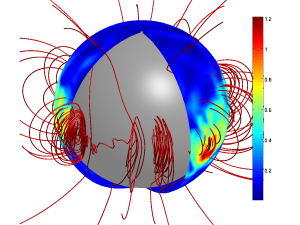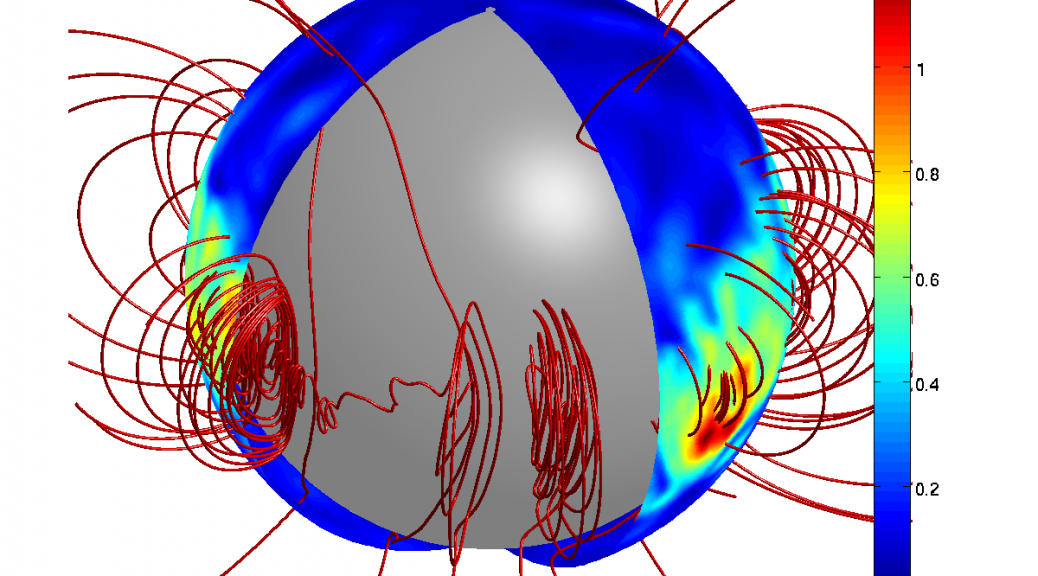Neutron stars have the strongest magnetic fields in the observable universe, and their fields strongly affect their evolution and observational properties. Within the outer 10% of the star, the ions are tightly squeezed into a rigid crystalline “crust,” and the flow of free electrons through the crust generates the star’s magnetic field. The evolution of the field is described by the electron-MHD equation, which depends nonlinearly on the field strength (the Hall effect), and somewhat resembles the vorticity equation for a non-magnetic fluid.
The imperfect analogy between electron MHD and non-magnetic fluid dynamics leaves open the possibility of turbulent cascades (either forward or inverse) in the magnetic spectrum. This might explain why the large-scale component of neutron star fields are observed to evolve on a faster timescale than large-scale ohmic diffusion.
The structure of the crustal magnetic field also strongly affects the flow of heat out of the star. Conversely, the temperature gradient affects the evolution of the field through thermoelectric effects (including the Biermann battery effect).
My research concerns the evolution of magnetic fields in the crust of neutron stars, and the interactions between the field and the heat flow.

